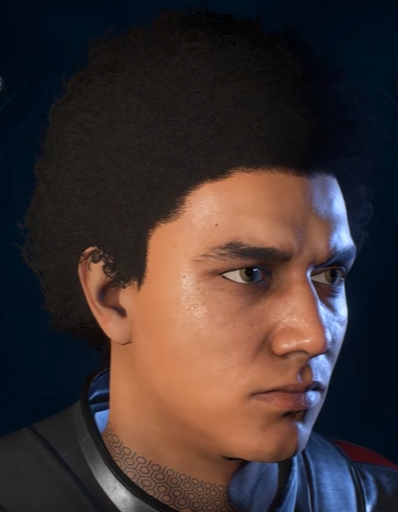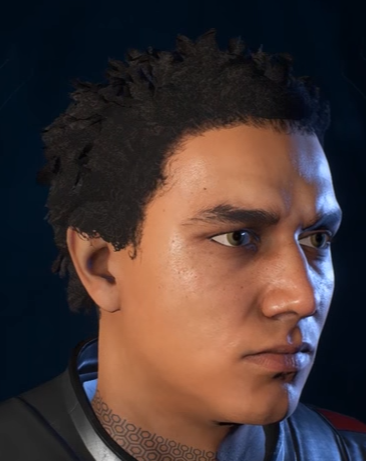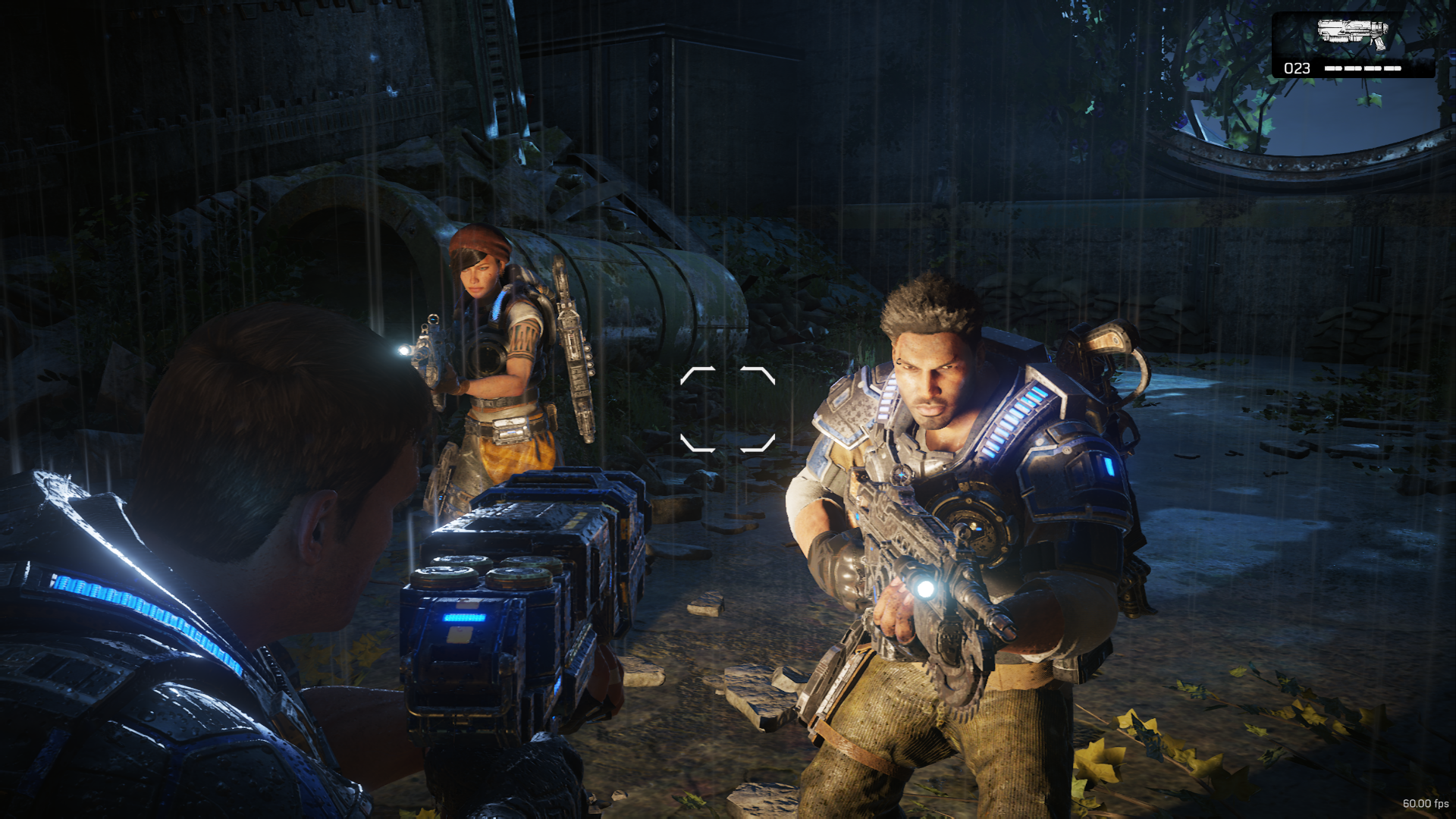Shades and Shaders
Several of the developers we spoke with use pixel art to make their games. As a tool, pixel art can be more straightforward when compared with the many moving parts that make up 3D game engines. Shawn Alexander Allen, one of the developers behind Treachery in Beatdown City says that working in 2D offers flexibility more easily than 3D, which requires a designer to anticipate different lighting needs. "If I'm not feeling how something looks [in pixel art] then I just change what they look like," he says. "And then maybe I change the background. I don't have to change the lighting for everything."
On the flip-side, the minimal 8-bit palette that Nintendo made famous in the 80s can be a hindrance when trying to depict shades outside those available within the original fifty-four-color palette. When the retro-styled Shovel Knight took to Kickstarter to find funding, it offered a "Pixel My Face" reward tier, which promised backers that their faces would be included as in-game portraits. Developer David D'Angelo points out that the Nintendo Entertainment System's limited palette led to a problem: "The darker spectrum of color is very underrepresented, and there aren't many shades that work for displaying a character with a darker skin tone." The team decided that diversity was more important than loyalty to the constraints of the NES, and added new shades when needed.
The game features characters of deep mahogany shades, rocking hoop earrings and big hairdos who have no trouble standing out in their environment. The game's programmer Robert Moore explains, "Because it's pixel art, and because we don't have limitations like skin texture and such, we could just work on the pixels and write the shaders accordingly."
Lighting
As mentioned above, lighting black and brown skin becomes much more complex in 3D games. Lighting can be prohibitively expensive to render, so the fewer lights there are in the game, the smoother it runs. As a result, many games rely on light maps and other forms of "baked" lighting, which predetermine how objects in a scene will look but can further exacerbate inconsistencies in character lighting. Another problem area is inconsistent framing. Where movies make use of locked-off sets and tightly scripted action, modern games grant the player a large amount of freedom in deciding where to situate your character and how to position the camera. A character can go from being well-lit to barely visible in a few tugs of the thumbstick.
An example of this is Bethesda's Skyrim, a game lauded at launch for its visual splendor. Yet that splendor never quite seems to reach the darker-skinned character options available to the player.
As the screenshots show, Tanya's Redguard perpetually has the same dark, umber hue despite being in different environments. How shadows play over her skin and clothing do not vary alongside changes in location.
Meanwhile, this Nord character actually looks like she exists in her environment. The exterior lighting casts shadows on her that match the rocks behind her. Even in darkened interiors we can see much more definition on her face than the flat and shapeless lighting of the dark-skinned character above.
Shareef Jackson hosts "Gaming Looks Good," a YouTube series where he often addresses the representation of black characters in games. Speaking on The Division's use of inconsistent lighting, Jackson says, "Even though they really tried to do a good job of including different races, genders, cultures and such. When you go into the sewers, the characters are not lit well. In fact they almost all look the same exact color as the background. I been with black people in dark places, and I know that they don't actually fade away."
"I don't think technology is holding us back at all," he posits. "We accomplish things with each generation. You can have hair and clothes flapping in the wind if you want. So if companies wanted to get it right, they prioritize it. Unless they have people on the team willing to call them out on it as well, it won't change."
For Robert Yang, a game designer and professor at NYU Game Center, this prioritization is a natural outcome of the unchecked biases that lie behind the 3D technology that powers modern gaming. "When 3D artists test their new skin shaders, they often use a 3D head scan of a white guy named Lee Perry-Smith," he notes. "What does it mean if we're all judging the quality of our skin shader solutions by seeing who can make the best rendered white guy?"
The image of a white face as the default canvas on which to cast light draws clear parallels to photography, where film developers once balanced skin tone against "Shirley Cards", reference sheets composed solely of photographs of white women. That practice has long been retired in favor of more diverse catalogues; isn't it time games caught up? First, developers must recognize that their tools have been shaped by cultural notions of what is deemed normal and desirable.
Colorism
In recognizing the bias toward white skin, it's also necessary to examine the bias toward lighter complexioned black folks. Colorism is an internalized form of white supremacy that has roots in slavery, when lighter-skinned slaves were allowed to work in the master's house instead of his field. "This translates into games even, where people design characters with lighter skin because people have an easier time identifying with them." says Moore.
To Breakup Squad developer Catt Small, tackling colorism in games is a worthy goal. "A lot of [developers] like to use the excuse that 'Oh, we wouldn't know how to light this person if we didn't make them lighter skinned.' But that just means that they should have done a little more work. It's not impossible."
Mainstream games with well-lit black protagonists like Mafia 3 and Watch Dogs 2 are proof that the technology necessary for lighting black skin is already there. Meanwhile, indie developers of color are forging their own path forward when it comes to depicting black characters of all shades in games. "People that are not black don't think about the different shades of blackness or browness," says Allen, "That's a problem."
Allen's game, Treachery in Beatdown City, for example, goes out of its way to depict many more kinds of skin tones than those you'd see in the NES aesthetic it pays homage to. Being mixed himself, Allen decided to model a character after his own golden-olive skin tone. Just as his own skin color feels personally unique and significant, his character is the only one who gets to rock that specific hue.
What unites the developers mentioned in this article is the time and effort they have committed to ensuring that the characters in their games are not treated as afterthoughts; as NPC number 28, as that default and thoughtless shade of brown or black that game technology thus far has put forward as the status quo. There may not be a space yet for rich, vividly detailed black skin in games, but the efforts of Allen, Moore, Small, and their many contemporaries in the industry, set a strong example for others to follow.
With ever-improving technology, it's seductive to believe that lighting darker characters will naturally improve alongside light ones. But even in the world of film, where technology has largely plateaued, inconsistencies remain. Real change also requires intention. Films like Moonlight reveal the impressive amount of ground that can be covered when the people leading the project have a plan for lighting their black actors from the jump.
Ironically, our decision to write this essay is thanks in part to the games industry beginning to get its act together. As developers of all stripes acquiesce to demands for inclusion and diversity, flaws in depictions of people of color shouldn't be allowed to go unremarked upon. Ten years ago, we wouldn't be having this conversation because there wouldn't be characters to have this conversation about.
Ultimately, as with everything else when it comes to diversity in games, it'll take marginalized players and developers alike, to make themselves heard and create art that challenges a status quo which still pretends white faces are the norm, while casting shade on a vibrant and colorful world.












